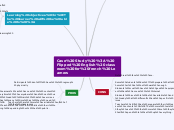Case Study : Flipped English classroom for french Learners
Basics
A flipped classroom is an instructional strategy and a type of blended learning that reverses the traditional learning environment by delivering instructional content, often online, outside of the classroom. It moves activities, including those that may have traditionally been considered homework, into the classroom.
Learning objectives.
The learner will be able to :
- describe the main principles of flipped classroom.
- explain pros and cons of the flipped classroom.
- apply the principles of flipped classroom on the design of a foreign language course
- understand what blended learning & flipped classrooms are
- identify different blended learning models
PROS
Participants don't have to regroup physically
- Learners can access to content everytime, everywhere and can use, read, train, do exercises as many time as they need.
- Teachers can individualize their teaching depending on their public.
Teachers are more available out of the classrooms.
Activities
CONS
No real face to face.
Some students don't prepare at home or do not work enough.
Students must have a good equipment and access to Internet
Students have to be available and ready at different and specific times.
Teachers still has prepare their lesson contents.
The more tools they use, the more time they will spend to set up everything.
